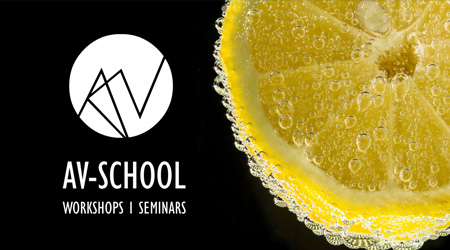Designing Interfaces
Teaching Staff: To be announced
Course Code: TEC611
Course Category: Specific Background
Course Type: Elective
Course Level: Undergraduate
Course Language: Greek
Delivery method: Lectures
Semester: 6th
ECTS: 7
Teaching Units: 4
Teaching Hours: 5
Teaching Structure:
| Activity | Semester Workload |
|---|---|
| Lectures | 26 |
| Lab Practice | 39 |
| Literature Study and Analysis | 56 |
| Practice and Preparation | 30 |
| Course Total (ECTS: 7) | 151 |
Prerequisite to / Recommended to: (AVA846), (AVA942)
The course analyses the practice of designing both physical (non-digital) and interactive digital products, environments, systems, and services. Part of the process involves analysis about how a user might interact with the end-product, digital and physical. The introduction of Augmented Reality and 3D Printing finally allows the connection between digital and physical presence, hence this course is an essential part of the development process between those two worlds. Common topics presented include interaction design principles, aesthetics and design, human–computer interaction, and software development, form and behavior. We focus not only on but try to imagine how things could be, combining design with functionality in order to achieve the targeted end-user experience.
Students who successfully attend the course will become familiar with good data visualization practices (with and without a computer), will be introduced to the notion of junkcharts, will know how to measure the usability of a system, will be introduced to the interfaces design rules and principles, will get to know Norman's design principles, the human-computer systems design research and its characteristics, the interaction design system process(4 stages), the design and methods for measuring the quality of an interface, the field of computer human communication, the human processor model, the user-system interaction model under Norman ,various distributed cognitive models, perception issues, attention and memory issues, system design examples, user interface design issues, Norman rules, the golden rules of Schneiderman, NASA's design guidelines, analyzing input / output devices, Fitt's law, perceptual problems, visual limitations, interface cartography, user/system feedback, experience transfer, idioms and stereotypes, associations and culture, pathologic design, help systems.
Week 1: Introduction
Week 2: Data Visualization
Week 3: Human - Computer Interaction
Week 4: Examples - System Design & Analysis Interface
Week 5: Designing User Interfaces
Week 6: Devices & Interaction (A)
Week 7: Devices & Interaction (B)
Week 8: Human Factors
Week 9: Design Rules
Week 10: Course Summary & Exercise
Week 11: Exercise & Parameter Analysis
Week 12: Exercise Completion (corrections)
Week 13: Presentation & Evaluation of the Exercise
The books listed are distributed in Greek language. Please contact the professor of the course should you require particular references in your language for easier reading.
Βιβλίο [320155]: ΑΞΙΟΛΟΓΗΣΗ ΔΙΑΔΡΑΣΤΙΚΩΝ ΣΥΣΤΗΜΑΤΩΝ ΜΕ ΕΠΙΚΕΝΤΡΟ ΤΟΝ ΧΡΗΣΤΗ, ΠΑΝΑΓΙΩΤΗΣ ΚΟΥΤΣΑΜΠΑΣΗΣ
Βιβλίο [59303612]: Από τις σύνθετες Τέχνες στα υπερμέσα και τους νέους εικονικούς – δυνητικούς χώρους. Ένα εγχειρίδιο για τον καλλιτέχνη που ασχολείται με την ψηφιακή Τέχνη, ΜΑΤΘΑΙΟΣ ΣΑΝΤΟΡΙΝΑΙΟΣ
ΒΑΣΙΚΑ ΣΤΟΙΧΕΙΑ ΤΗΣ ΕΜΠΕΙΡΙΑΣ ΤΟΥ ΧΡΗΣΤΗ: ΣΧΕΔΙΑΣΗ ΙΣΤΟΤΟΠΩΝ ΜΕ ΑΝΘΡΩΠΟΚΕΝΤΡΙΚΑ ΚΡΙΤΗΡΙΑ
Κωδικός Βιβλίου στον Εύδοξο: 12533833
Έκδοση: 1η/2011
Συγγραφείς: JESSE JAMES GARRETT
ISBN: 978-960-461-445-5
Τύπος: Σύγγραμμα
Διαθέτης (Εκδότης): ΕΚΔΟΣΕΙΣ ΚΛΕΙΔΑΡΙΘΜΟΣ ΕΠΕ
ΑΛΛΗΛΕΠΙΔΡΑΣΗ ΑΝΘΡΩΠΟΥ - ΥΠΟΛΟΓΙΣΤΗ: ΑΡΧΕΣ, ΜΕΘΟΔΟΙ ΚΑΙ ΠΑΡΑΔΕΙΓΜΑΤΑ
Κωδικός Βιβλίου στον Εύδοξο: 12279101
Έκδοση: 1η/2011
Συγγραφείς: ΠΑΝΑΓΙΩΤΗΣ ΚΟΥΤΣΑΜΠΑΣΗΣ
ISBN: 978-960-461-439-4
Τύπος: Σύγγραμμα
Διαθέτης (Εκδότης): ΕΚΔΟΣΕΙΣ ΚΛΕΙΔΑΡΙΘΜΟΣ ΕΠΕ
ΔΙΕΠΑΦΗ ΧΡΗΣΤΗ - ΥΠΟΛΟΓΙΣΤΗ: ΜΙΑ ΣΥΓΧΡΟΝΗ ΠΡΟΣΕΓΓΙΣΗ
Κωδικός Βιβλίου στον Εύδοξο: 13650
Έκδοση: 1η/2006
Συγγραφείς: ΔΗΜΟΣΘΕΝΗΣ ΑΚΟΥΜΙΑΝΑΚΗΣ
ISBN: 960-209-975-5
Τύπος: Σύγγραμμα
Διαθέτης (Εκδότης): ΕΚΔΟΣΕΙΣ ΚΛΕΙΔΑΡΙΘΜΟΣ ΕΠΕ
Σχεδίαση Διεπαφής Χρήστη, 6η Εκδοση
Κωδικός Βιβλίου στον Εύδοξο: 59396199
Έκδοση: 6η Εκδοση/2016
Συγγραφείς: Shneiderman Ben, Plaisant Cathrerine
ISBN: 978-960-418-655-6
Τύπος: Σύγγραμμα
Διαθέτης (Εκδότης): ΕΚΔΟΣΕΙΣ Α. ΤΖΙΟΛΑ & ΥΙΟΙ Α.Ε.
The course is taught through lectures and lab sessions. The lectures examine the theoretical part by providing examples and analyze good and bad design practices. Students are encouraged to participate in the lecture, present and elaborate on their ideas and experiences for the design and evaluation of physical and virtual interactive systems.
The practical part is completed in laboratory course format during which students complete individual or group projects. This work is mainly designed individually with each student featuring a unique them that has to be completed and delivered at specific dates or at the end of term. In special cases a group exercise may be set featuring distinct roles for each team member.
Enhanced by multimedia content.
The learning process is supported by the asyncrhonous e-learning platform e-class.
The exercises can be completed in English.
Progress in this course is assessed during the semester by quality implementation and timely submission of the required work and participation in the course activities (presentations, visits, projects, experiments). Submitted work is rated for the quality and scope of the implementation, proper formatting and completeness of the presentation that is often required to be implemented by the students to present the results of their research as part of the lecture. Work sent via other communication channels such as e-mail, social media will not be considered. Students are responsible to seek clarification if they do not understand the assignment and solve their queries during the course laboratory. In order for students to receive their final grade, they must submit a signed statement stating that their work does not contain plagiarism and it was solely created for this particular course. They must also sign the marking form provided by the lecturer during the exam period.
Students who do not complete the course and fail for a specific term, can complete and submit the work requested during the most recent semester. As the course progresses from year to year, they should always enquire about the latest exercises which should be present within the e-class system. Those exercises are submitted during the examination date as it is programmed centrally by the department and the students should also sign the form provided during the examination in order for their work to be evaluated and receive the final mark.
Back



 Designing Interfaces
Designing Interfaces







